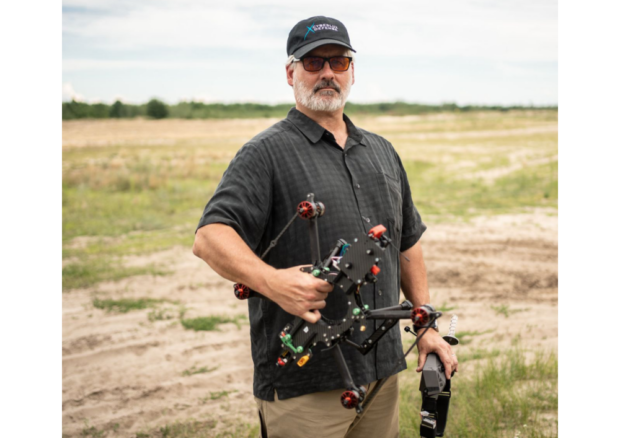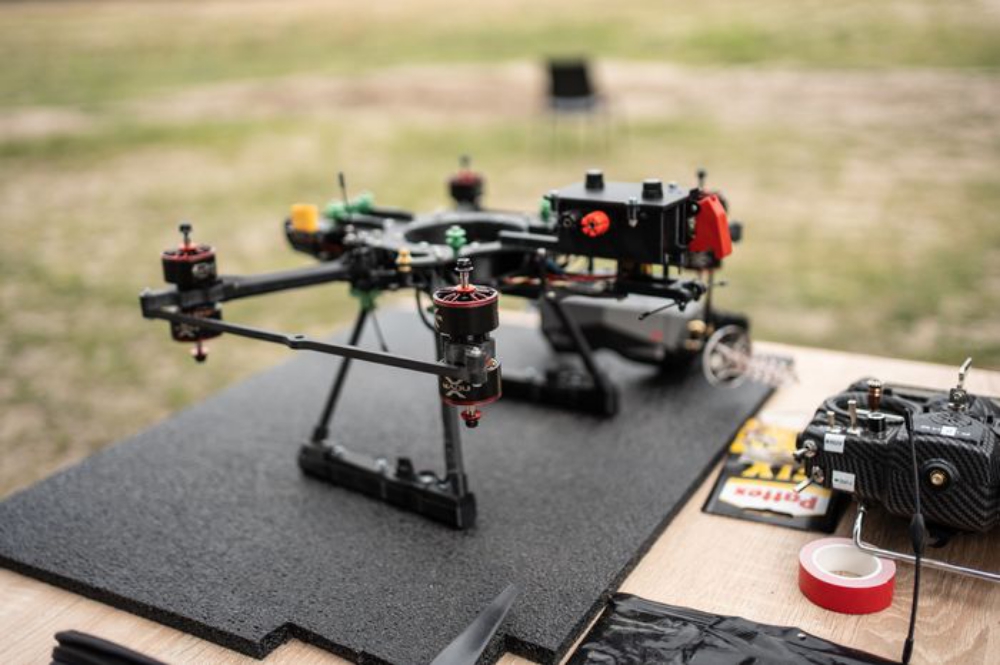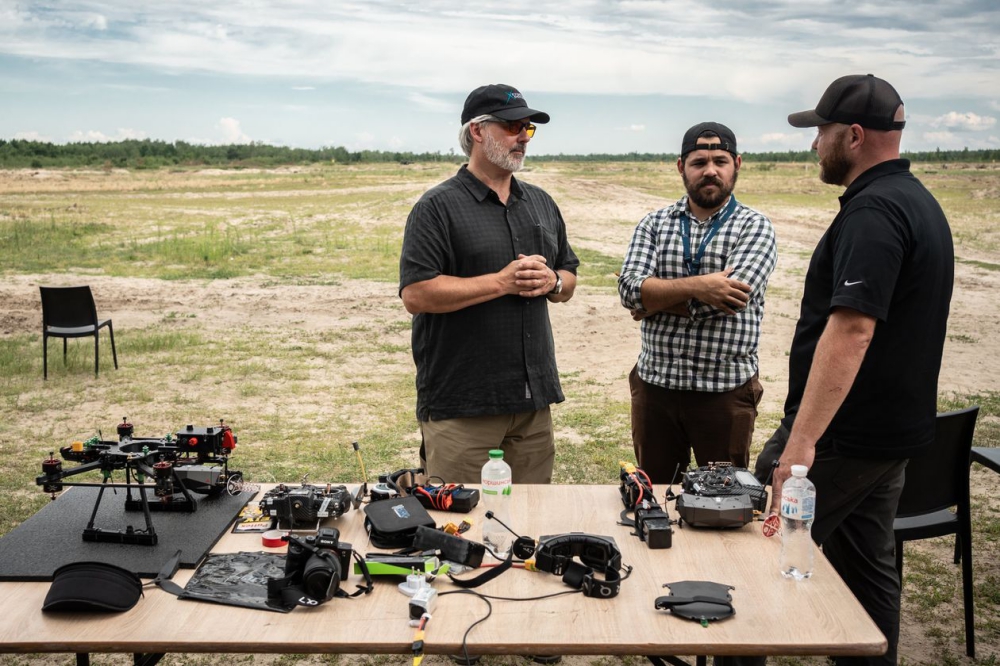., a penny-stock company traded on the over-the-counter market, recently made a foray into drone production and had pitched the Pentagon for Ukraine business without luck. So executives with the North Carolina lighting company decided to cut through the U.S. military’s red tape and take its product directly to the Ukrainians.
In July, Cyberlux Chief Executive Mark Schmidt raced to Kyiv under military escort with a modified movie-production drone he hoped could help Ukraine’s military repel the Russian invasion.
Now, eight months later, the Pentagon appears set to buy the Cyberlux K8 and deliver the machinery to Ukraine.
“We’re a virus that’s inside the body of DOD,” said Mr. Schmidt of the company’s path to the Pentagon, referring to the Department of Defense. “We’re either going to influence the way they do things in the future, or be ejected from the body.”
The journey that Cyberlux took from North Carolina to Kyiv provides a window into how a number of small defense companies are attempting to navigate—and in some cases circumvent—the Pentagon bureaucracy to get their weapons to Ukraine. It also shows how drones’ increased usage in modern warfare has created new business opportunities.
Cyberlux, whose main business for the past two decades has been in long-duration LED lights, is new to the drone market. In March last year, it bought Catalyst Machineworks, a small Houston-area drone maker that specializes in quadcopters, also known as cinelifters, for racing leagues, as well as film and TV production.
A website for the drone company said that it comprised “only a few people” and that “shipping is handled by one of the owner’s wives.”
Cyberlux is one of many small companies that have sought to pierce the Pentagon’s bureaucracy.
Red Cat Holdings Inc., a Puerto Rico-based company, has placed roughly two dozen Teal Golden Eagle reconnaissance drones in Ukraine but has also been stymied at the Pentagon.
“The Ukrainians want them,” Red Cat CEO Jeff Thompson said. “They’re already using them. How do we get these tools into Ukraine? It’s very frustrating for us and other small drone companies.”
Cyberlux took a different angle, via a U.S. drone expert. The expert connected Cyberlux with senior officials in Kyiv, according to Mr. Schmidt, and in July, he traveled to Poland and crossed the border into Ukraine.
At a testing ground outside the capital, Cyberlux demonstrated its drone to Ukrainian officials, including Gen. Valeriy Zaluzhny, the commander in chief of the country’s armed forces.
The Cyberlux K8 zipped across a field toward a static armored personnel carrier, trailed by another drone fitted with a video camera that captured the explosion as the drone made contact with the vehicle and relayed the footage to a screen visible to the soldiers and officials present.
Following the demonstrations, Ukrainian Deputy Defense Minister Denys Sharapov, in a letter reviewed by The Wall Street Journal, requested 1,000 K8 drones from the U.S. European Command.
“We submit requests to cover the priority needs of the defense forces of Ukraine to the Pentagon through official channels,”
a Ukrainian Defense Ministry spokesman said, declining to comment specifically on the K8.
The Pentagon assigned Ukraine’s Cyberlux request to the Naval Air Systems Command, which works with airborne-weapons systems, including drones, according to a Defense Department spokesman.
In November, the naval command paired Cyberlux with Huntington Ingalls Industries Inc., a Virginia shipbuilder that already has extensive contracts with the Pentagon, Mr. Schmidt said. Working with an established company allowed Cyberlux to bypass the months or years it might take for a small firm to break through military-procurement bureaucracy, which requires many layers of approvals and voluminous documentation. A Huntington Ingalls Industries spokesman declined to comment.
As Cyberlux executives believed that their drone deal had reached its final stages, a stock regulator’s public reprimand threatened to undo it by hurting the company’s credibility.
In December, OTC Markets Group Inc. designated Cyberlux’s stock as caveat emptor, a buyer-beware label caused by misleading or manipulative stock promotion, an investigation of fraud, or the suspension of trading for public-interest concern. Some brokerages restrict investors’ abilities to trade caveat emptor securities.
Cyberlux’s stock price fell roughly 80% to less than a fraction of a penny following the December designation. An OTC Markets Group official declined to comment on the reason for the designation.
Mr. Schmidt said the label resulted from a Cyberlux lawyer failing to disclose the extent of his company stock in financial filings. The lawyer declined to comment.
“We are an OTC company, and so things are kind of Wild West-ish,” Mr. Schmidt said. “It’ll be cleaned up and straightened out.”
Last month, on the first anniversary of Russia’s invasion of Ukraine, the Pentagon announced $2 billion in security assistance for Ukraine. On the list of equipment, which included artillery rounds, laser-guided rockets and mine-clearing equipment, were the Cyberlux K8 drones.
Cyberlux’s stock has yet to rebound.
The Defense Department declined to comment on Cyberlux’s stock warning, or to provide the order’s quantity or delivery timeline, and company executives say they don’t yet know the details. “We consult very closely with Ukraine to identify their most urgent needs,” a Pentagon spokesman said.
Top Photo:Cyberlux CEO Mark Schmidt demonstrated a K8 drone at a testing ground in the Kyiv region, Ukraine, in July
All Photos:SERHII KOROVAYNY FOR THE WALL STREET JOURNAL
Source: The Wall Street Journal



